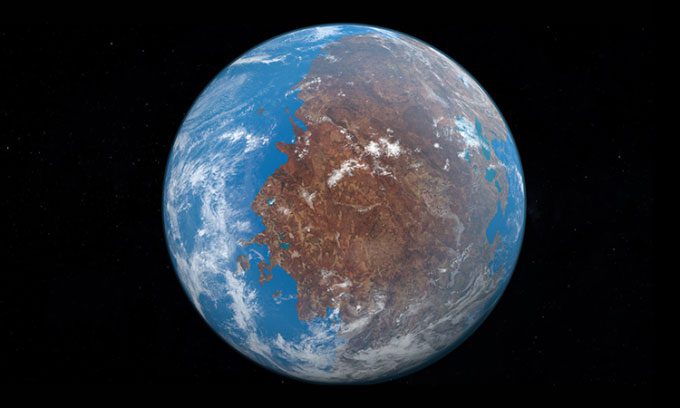The Earth once recorded a “super-ocean” covering 70% of its surface, surrounding a massive ancient continent.
Today, the Pacific Ocean is considered the largest ocean on Earth, covering over 30% of the planet’s surface. However, this is merely a “remnant” of what was once the largest ocean in Earth’s history.

Illustration of the supercontinent Pangea and the vast ocean surrounding it. (Photo: Ianm35)
According to Brendan Murphy, a geology professor at St. Francis Xavier University (Canada), the largest ocean in history was called Panthalassa. This was a vast sea that spanned the globe, surrounding the supercontinent Pangea from about 300 million to 200 million years ago, during the late Paleozoic and early Mesozoic eras.
“The largest oceans typically occur when supercontinents form. Only when we have a supercontinent do we have an ocean existing around it,” Murphy stated.
This ocean included what is now the Pacific Ocean in the western and northern regions of the Tethys Sea. Over time, Panthalassa evolved into the Pacific Ocean due to the closure of the Tethys basin and the breakup of the Pangea continent. For this reason, Panthalassa is often referred to as the Ancient Pacific.
In terms of surface area, Panthalassa dwarfs the Pacific Ocean. This ocean covered approximately 70% of the Earth’s surface, according to a report in the journal Earth-Science Reviews, with an estimated area of 360 million square kilometers.
Interestingly, the Pacific Ocean will not remain the largest ocean in the future.
Geologists predict that the movement of tectonic plates will cause Australia to split the Pacific Ocean in the next 70 million years. Concurrently, the Atlantic Ocean will expand, ultimately claiming the “crown” of the largest ocean on Earth.





















































